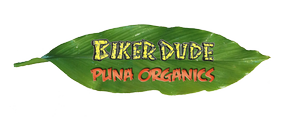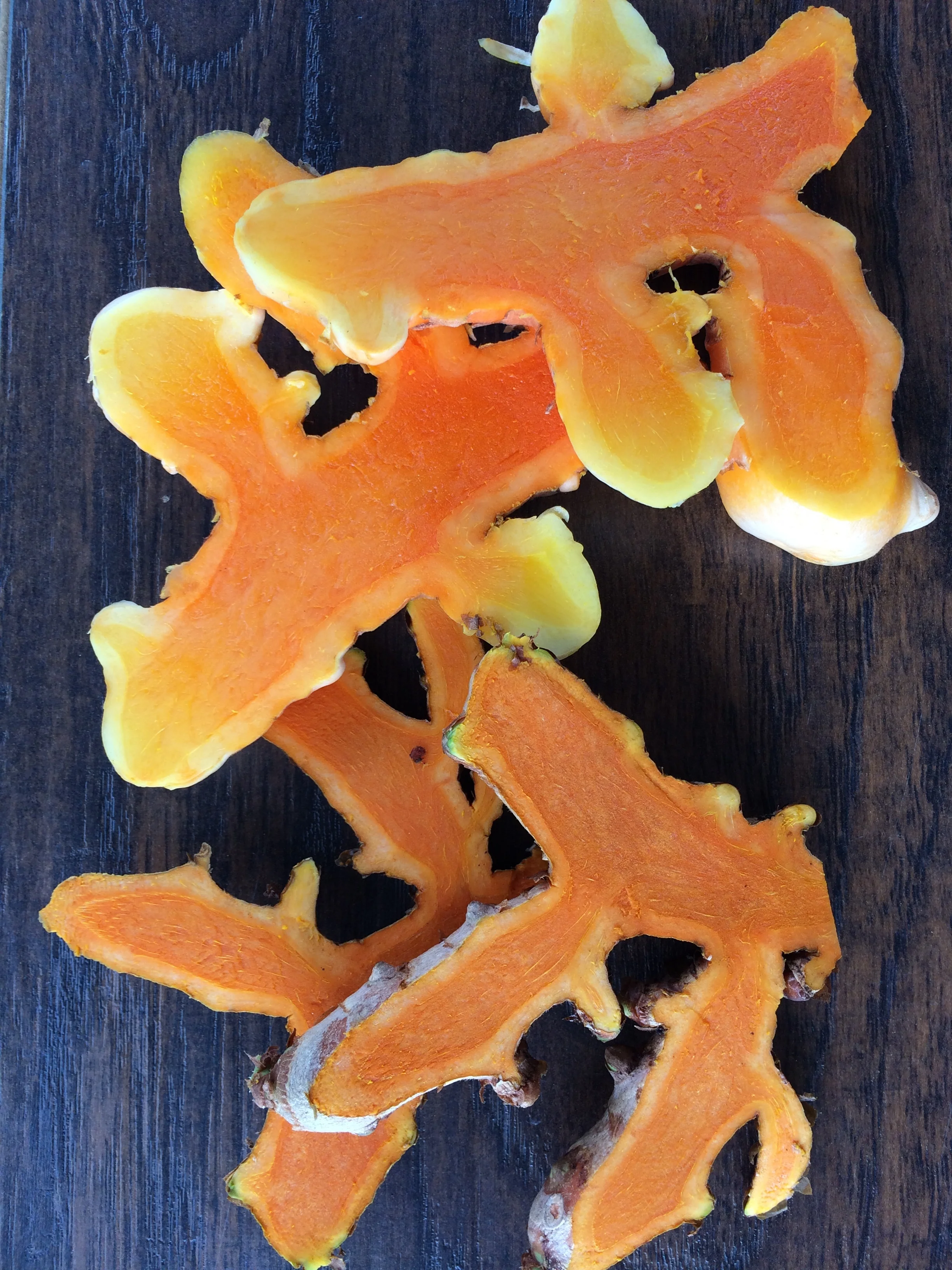Should I Pre-sprout?
Pre-sprouting is a technique that provides ideal germination conditions for the ginger while you're still waiting for ideal conditions in your growing location. If you had perfect 70 degree weather outside and warm soil temps, you would simply just plant into your growing beds. Pre-sprouting buys some time for you, as you can start sprouting the seed before outdoor temperatures are warm enough to plant, and if you have a short season, this would be a good technique to employ.
What media or type of soil will grow the best ginger?
Any very fertile, well draining soil or media will grow good ginger. Soil or media that is heavy clay, hard pan, mucky or the like will produce less successful results. If growing in pots or bags, we recommend coir media for baby ginger production as opposed to peat. Coir tends to be less mucky and wets easier when it does become dry, and it is also a sustainable resource while peat is not.
What type of fertilizer should I use?
Good question! Maintaining high fertility is essential to producing ginger. Every soil is different. We recommend you get a soil test if you are growing in the ground. Growing in media requires that you supply all elements that your plants will require. Generally a well balanced organic fertilizer like a 5-5-5 in the beginning of the crop cycle or perhaps chicken manure is a good way to start. High quality compost is a good addition however it usually does not have the required amount of fertilizer that ginger requires, maybe for lettuce but not for ginger. High levels of Calcium promotes cellular integrity (read stress) in the crop. One should be careful using lime as it can raise the pH of the soil or medium and cause imbalances in the nutrient cation thus leading to deficiencies of other elements in the plant. Gypsum is your lime option if ph is an issue. Potassium is also of special interest to ginger growth. In short make sure you maintain high levels throughout cycle.
Can I grow ginger I get at the store?
We do not recommend it. All store bought ginger comes from the field and brings with it a slew of potential diseases and problems such as;
- Bacterial wilt
- Fusarium wilt
- Pythium wilt
- Nematodes
- Rhizoctonia
- Chill injury
The most destructive of these diseases is bacterial wilt. Ralstonia or bacterial wilt will reside in the soil indefinitely. There is no way to see most of these problems until it is too late. A farmer will harvest ginger all around a diseased area and that ginger is fine for food but he would never use it for seed. So why would you?
Is ginger seed an actual seed?
No, ginger is sterile, it produces no seeds. It is vegetatively propagated, meaning we plant ginger pieces (aka the ginger seeds) to make more ginger. This is also the reason ginger can harbor pathogens as you just keep cutting up your ginger and replanting your problems.
Wait a minute...Why is your ginger "seed" any better than the other guys'?
We start with tissue cultured material that is free from pathogens to get the best start possible. We then grow it above ground in new media every year and grade our seed heavily for the best quality possible. Our seed never touches the ground. Because of this process, it took us 5 years since the planting of the first starts to yield the seed-quality rhizomes!
The lovely Elvira
Is anyone else growing seed for the mainland market?
We are the first to offer certified organic disease-free ginger seed to the mainland that has been produced from cell to seed. I'm sure there will be competitors, as the demand has been greater that production. However, we are the only ones to offer seed that has gone through this exacting process. Also, a critical step in maintaining clean seed that meets our standards is refreshing the strain by starting over in the lab every few cycles. Most other seed sellers have been short-cutting in order to capitalize on the growing demand for ginger seed. Before making your purchase, ask questions of your potential seed supplier. Ask for their organic certification, if that is important to you. Did they grow it or is it a resale of ginger from some other source? Was it grown organically? If not, what kind of fungicide and herbicide exposure has it had? Is it grown above ground and in a sterile medium?
If something smells fishy it usually is!
Would non-organic seed be better?
Our own personal conviction is that organic seed is better. If one were growing non-organic seed and had any potential fungal pathogens, they would have the option to use fungicides and/or other chemicals, but those would only mask and delay the onset of potential problems. In years of speaking to commercial ginger growers and reading any literature available on the subject, it is safe to say no chemical can completely eradicate a pathogen in ginger. Even if chemical suppression is debatable... guess what happens when you stop using these chemical cures? Disease! Guess who it happens to? You!
We choose to grow organically only. If a plant shows any signs of problems it is removed from our production cycle before it becomes a potential host for disease.
Are there any insects that eat ginger?
Yes. Various members of the order Lepidoptera like to munch ginger...usually young ginger. The older it becomes, the more the spicy heat from ginger usually repels them. However, pests can and do attack stored ginger, especially if it has been sitting for months. Here in HI we have to deal with the lesser cornstock borer (Elasmopalpus lignosellus.) They usually arrive soon after sprouting, drill a hole in the new shoot and eat the tender center before moving on. On the mainland we have heard reports of wireworms of some sort causing trouble. If detected you will need to take actions to prevent further damage.
Fortunately, effective control can be achieved for members of Lepidoptera with organically certified inputs. Two options that are available are Dipel DF OMRI and Entrust (spinosad) OMRI. Dipel is inexpensive, but the critters must come in contact with and/or ingest it, and it can be challenging to get the material where it needs to be in order to get the control you want. Entrust, on the other hand, is a more spendy item, but it is cost effective and provides excellent control for the nasties. Entrust also has a little staying power within the plant so that protection lasts for a week or so after material is applied. But as always, read and follow directions on the labels folks. Additionally, any pest control inputs must be cleared with your certifying agency before application.
How long have you been growing ginger?
Hugh Johnson (aka Biker Dude, our founder) has been growing organic ginger for export since 1992 - longer than any other grower out there! And we all care deeply about your success in the long run too!
Is turmeric harder to grow than ginger?
Not at all. They both respond well to heavy feeding and ample moisture. I think you will be impressed by the results if you give turmeric the same attention that the ginger receives.
Can I save my own ginger that I grew and use it for seed the following spring?
Yes, that is definitely possible. You will need to keep your ginger fed and watered until it goes dormant in January. When it is dormant, you must keep it from getting too cold. We start harvesting seed in late January. Most likely you would need to have your ginger in a heated greenhouse to keep soil temps in the forties. But consider this: if professionally grown and graded seed costs $8.50 a pound, and you sell your ginger for $10 a pound and up, does it financially make sense to spend extra time and money to grow seed that is cheaper to buy? :)
What happens to the used seed piece I purchased and planted?
Most likely it will break off from your fresh ginger during harvesting or washing. Otherwise, just snap it off. You can wash and re-trim the used seed, juice it, and then freeze the juice into ice cubes for beverages. Or freeze it whole for personal use. However, it will be unsightly little pieces of over trimmed ginger, so if you want to sell it, your best chance is to try and sell it as off grade (you could possibly call it juice grade or soup grade).
When I was short of seed 18 years ago I conducted a field trial using previously used seed. I re-trimmed it, washed and disinfected it. Then I planted a row next to fresh seed. The old previously used seed did sprout but with in a month growth lagged far behind fresh seed. It grew but was severely stunted. Here in Hawaii all farmers throw away the used seed or sell it as juice grade.
Should I ask for cut seed or whole hands for planting?
I think if you are a first time grower you should get cut seed. What this basically means is that we cut the whole hands of ginger into smaller sizes to facilitate planting. Some growers prefer to get whole hands as it allows them to control their seed size and also buys some time if they do not wish to plant it right away. Whole hands lose less moisture if stored, while cut seeds lose moisture quicker due to the increased amount of exposed surface area. If you prefer whole hand seed, there are instructions below on how to cut it yourself.
Turmeric, on the other hand, is a lot more rugged and doesn't need the same amount of attention when it comes to making smaller seed pieces. Just snap off the largest fingers off the main seed piece, leaving a couple of the smallest ones attached.
Is bigger seed better?
One example of seed spacing, this one is in a diamond pattern
Not necessarily. Smaller sized seed can be planted and will sprout, and a one ounce seed will most likely produce the same volume of new growth as a seed that weighs 1.5 ounces. What is more important is that it has an ideal growing environment. Larger sized seed can typically survive harsher conditions (like hot, cold, wet or dry spells) and still produce a vigorous sprout. Also, the larger seed may handle abuse or neglect a little longer than the smaller seed.
When we cut seed, we don't do it by weight, but instead try to minimize the surface area exposed while also not being wasteful and having too large a seed. The hand of ginger dictates where to cut the seed, and the seed cutter determines when it has been cut up enough.
Expansion ratio? What's that? What is an good expansion ratio?
Simply put, an expansion ratio is the amount of ginger you are able to harvest compared to the weight of the the seed you planted. So if you planted a 1 ounce seed piece and you harvested a pound of baby ginger, you have a very good expansion ratio of 16:1! While this is possible, most results range from 8:1 to 12:1. There was this one mainland farmer though who posted photos of a seven pound hand that grew from a single seed! Probably a fish story, but it is entirely possible.
Mother Rhizome forms first and is highest cucurmin, fingers are second and the growing tips are lowest.







